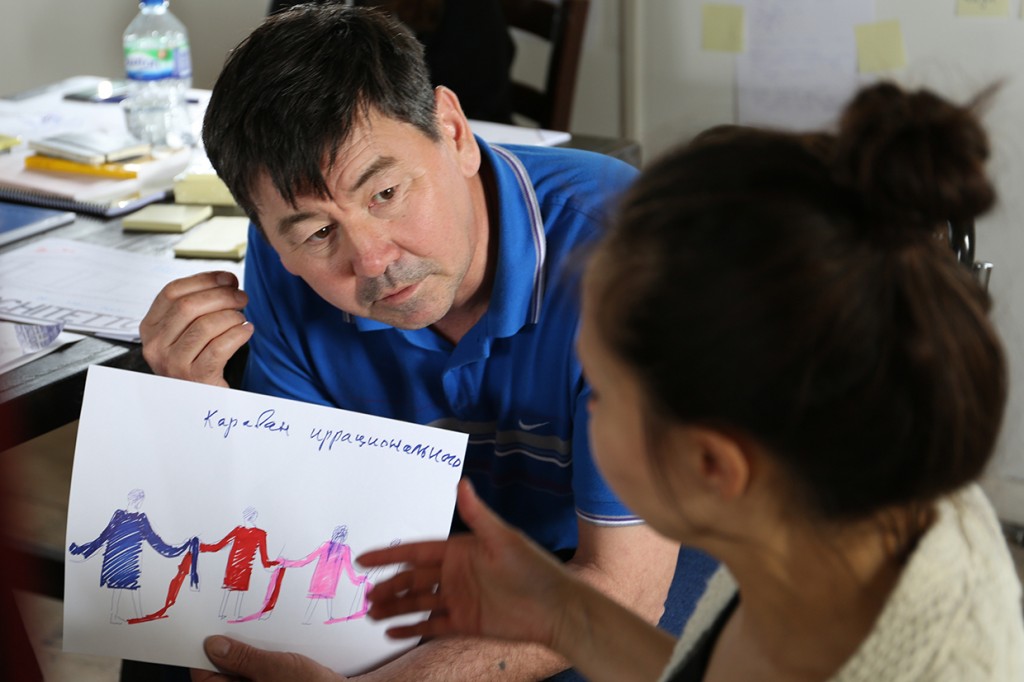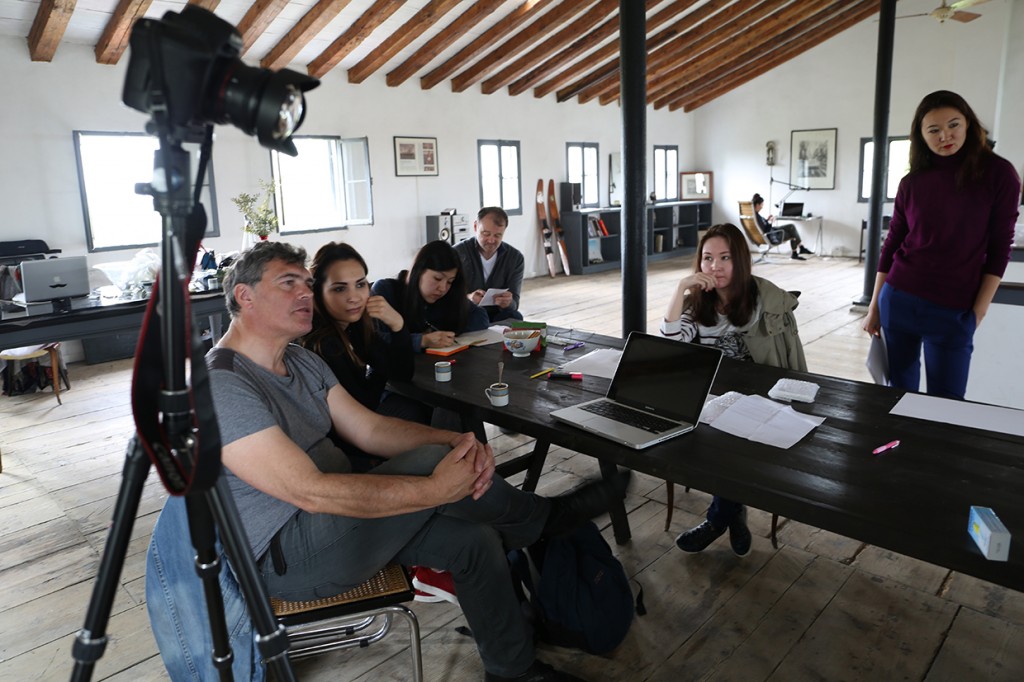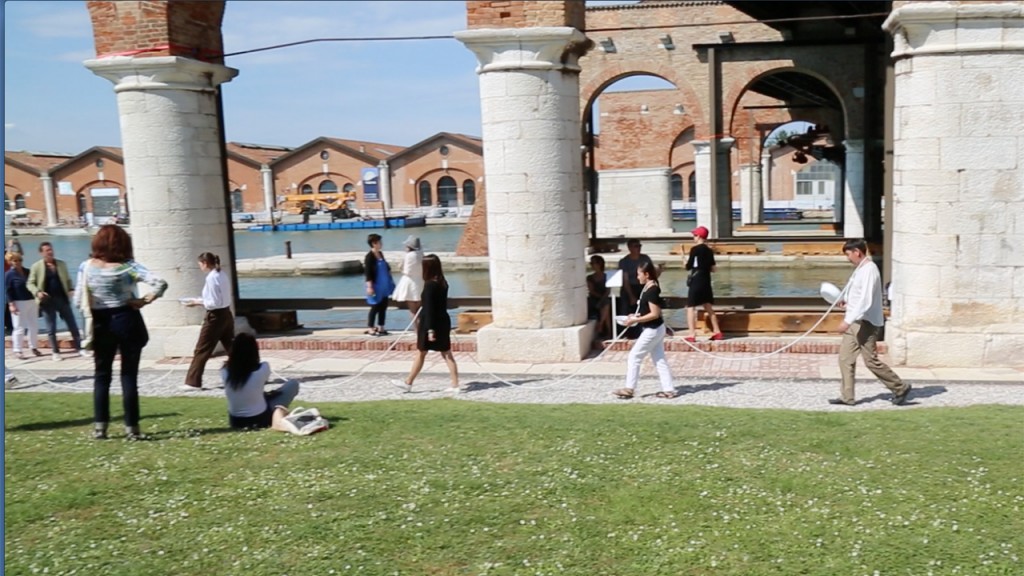ASTANA – To counter what some believe to be an underrepresentation of Kazakh art internationally, the International Art Development Association (IADA) created an “Invisible Pavilion” entitled “Protagonists” on the sidelines of the May 1-10 Venice Biennale, where Kazakh and Central Asian artists were able to exhibit their work and their culture.
“Since the independence of Kazakhstan, we have never had our own pavilion,” explained one of IADA’s founders, Dina Baitassova. “It is quite a disappointing fact for a country that aims to be one the most developed countries globally, but it actually motivates young artists and art specialists to change this,” she said.
“Protagonists” was set up to showcase young artists at work, as well as to hold workshops, discussions and presentations in the format of an artists’ studio.
This is the second time the IADA, a nonprofit organisation for promoting European and Central Asian artists, has held a pavilion at the Venice Biennale. “This time we decided to bring seven cutting-edge young artists for workshops around the idea of the ‘invisible pavilion’ and ‘Protagonists,’ pushing them to create in the context of the given place and time,” Baitassova said. “So actually, it wasn’t presented in a form of a temporary show in a space but as a series of performances on San Erasmo Island, where the artists lived, and in the city of Venice during the opening of the biennale. They tried to be spontaneous, to act and to react to a problem, to make themselves visible, to become protagonists of contemporary art.”
The concept of the invisible pavilion was proposed by French art critic and curator Paul Ardenne, Baitassova said. The pavilion would give Kazakhstan’s young, contemporary, but often unrecognised artists a place to be visible, even while outside of the velvet rope. As for ‘Protagonists,’ that was suggested by French performance artist Sarah Trouche, Baitassova said.
Trouche has travelled to Kazakhstan twice for IADA art residencies, and worked with Protagonist’s exhibitors. “For some of them it was their first performance experience. She stimulated artists to experience performance and pushed them to think on who they are and what they wanted to show, what they have to say in this specific context,” Baitassova said.
Aza Shadenova, one of the artists featured in Kazakhstan’s invisible pavilion, said one of their goals was to find ways of making themselves visible, and their individual and group performances supported this.
“The idea of the performance was to prepare the ground for our future Kazakh pavilion,” she said. “The artists got linked and connected to each other by the throat with one rope. Each of us had a bucket, [and] we took the water from the canal and slowly spread out the water between us. Then we moved and started splashing the water from the buckets into the ground – something you’ll see Kazakh grandmothers do before sweeping their backyards. That was the group performance, which brought loads of attention as it interacted with the visitors that were walking to different pavilions. … It was a 20 minute action which made a contextual point for our invisible Kazakh pavilion and brought the attention we needed.”
There can be a burden in coming from a relatively unknown region, and a tension between presenting an individual vision while hoping to promote a broader regional understanding. “Protagonists” was designed to balance the lack of a Kazakhstan or Central Asian Pavilion this year, but individual artists were free to signify the region or not, Baitassova said.
“It was never my priority to show my ethnicity in my work up until I moved to Europe, to London,” Shadenova said. “The thing is, I’ve found this new love for my motherland from the distance, which then affected my work as an artist. Before moving here, I was always concentrating in moving forward with European thinking, and putting aside my ethnicity. But being brought up by my Kazakh family, born in Uzbekistan and living in Kyrgyzstan, I got unintentionally confused with my background, and this inspired me to try to work and use this rich Central Asian mix in my work.”
In addition to introducing the world to Kazakh art, the biennale was a chance to introduce Kazakh artists to Venice, Baitassova said. Most of the artists they invited were young, and only Shadenova had taken part in the Venice Biennale before, she said. “I think it’s really important to feel the city of Venice, which creates its special context, vibes and energy. It was also very important to make this project at the opening of the biennale because it’s a perfect chance to meet all the most important curators, artists and gallery owners and generally to see what is presented at the international level of art. It was a kind of pilot project for preparing the future pavilion.”
IADA expects Kazakhstan to have its own pavilion as soon as 2017 – they have been working toward that for two years, Baitassova said. “There is a real need for a developing country to show that it has achievements not only on the economic or agricultural level, but also in contemporary culture. There are a lot of talented, strong artists in the region that deserve to be represented on such an international platform. I think that government should support this idea and contribute to this ambitious project.”
Artists included in the Invisible Pavilion of Kazakhstan this year were Shadenova, Askhat Akhmediyarov, Kamilla Gabdullina, Syrlybek Bekbotayev, Ada Yu, Assel Kadyrkhanova and Alpamys Batyrov.
